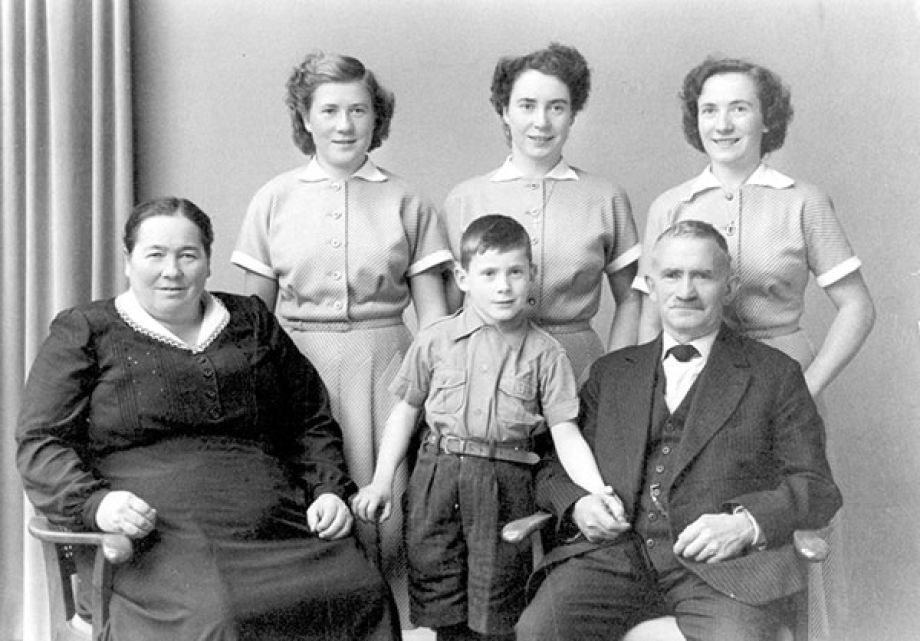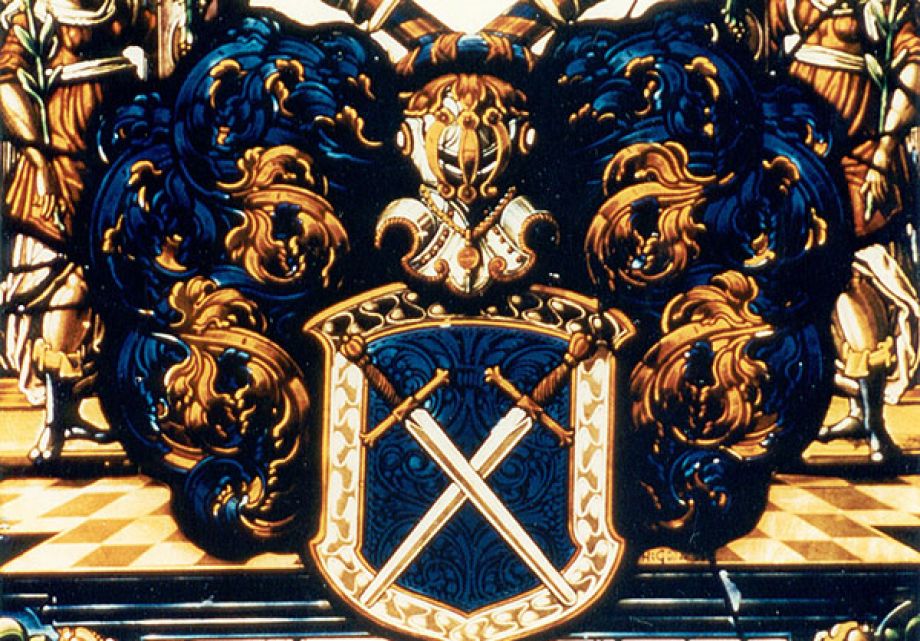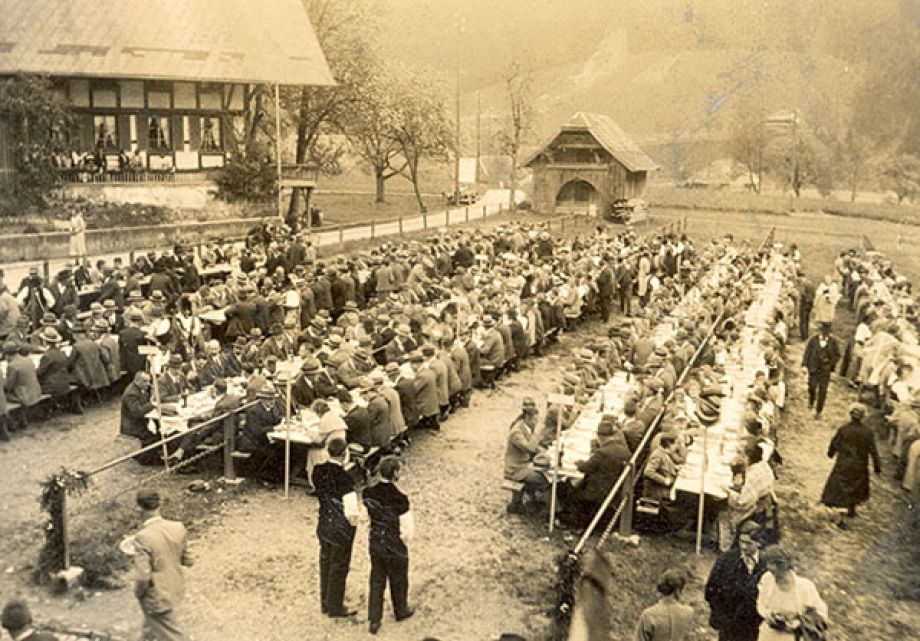-
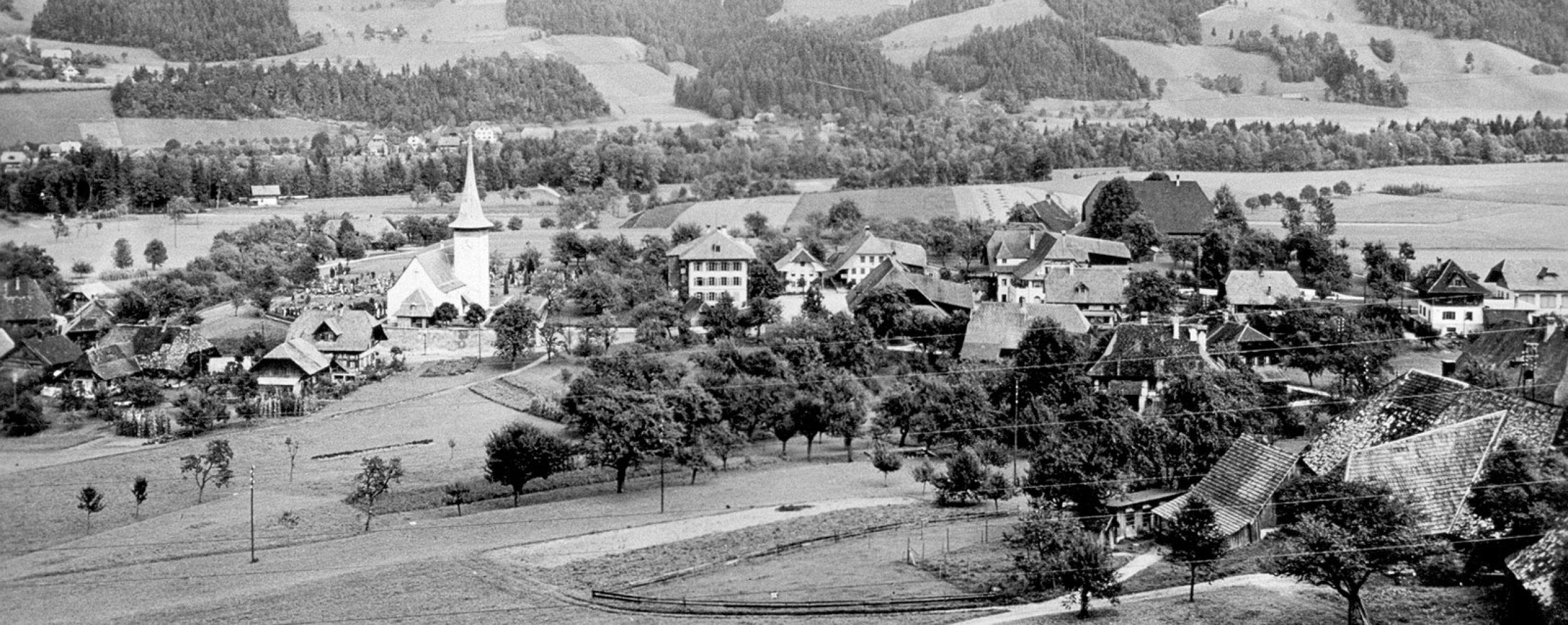
Hans Minder
Local historian and genealogist
Wittenbachgässli 611
3438 Lauperswil
This email address is being protected from spambots. You need JavaScript enabled to view it. -
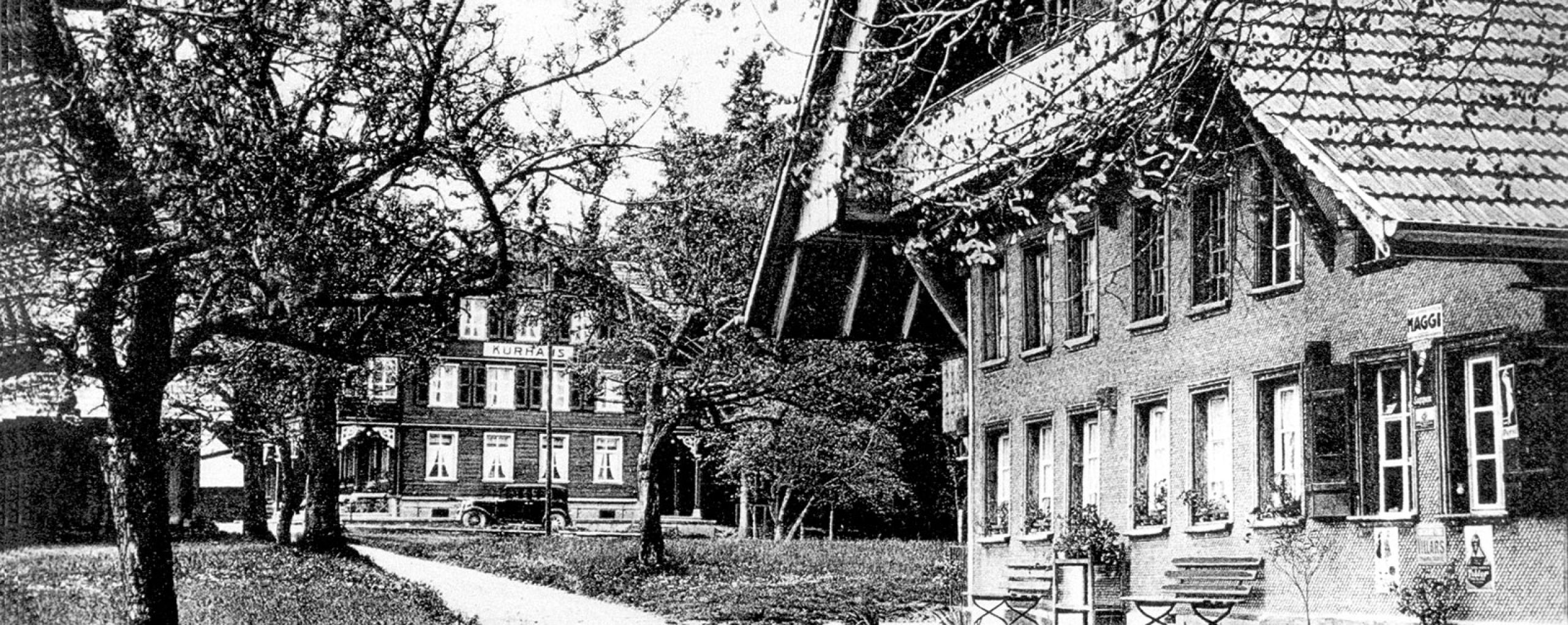
Hans Minder
Local historian and genealogist
Wittenbachgässli 611
3438 Lauperswil
This email address is being protected from spambots. You need JavaScript enabled to view it. -
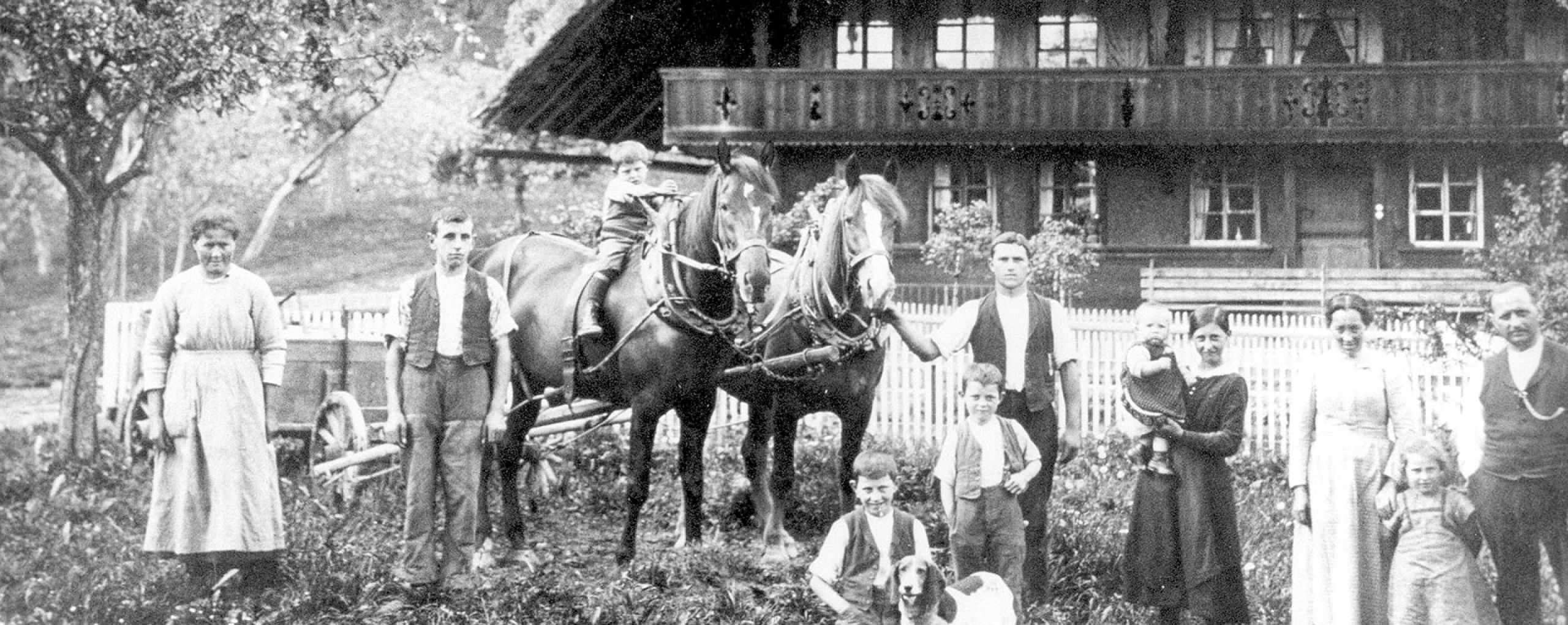
Hans Minder
Local historian and genealogist
Wittenbachgässli 611
3438 Lauperswil
This email address is being protected from spambots. You need JavaScript enabled to view it. -
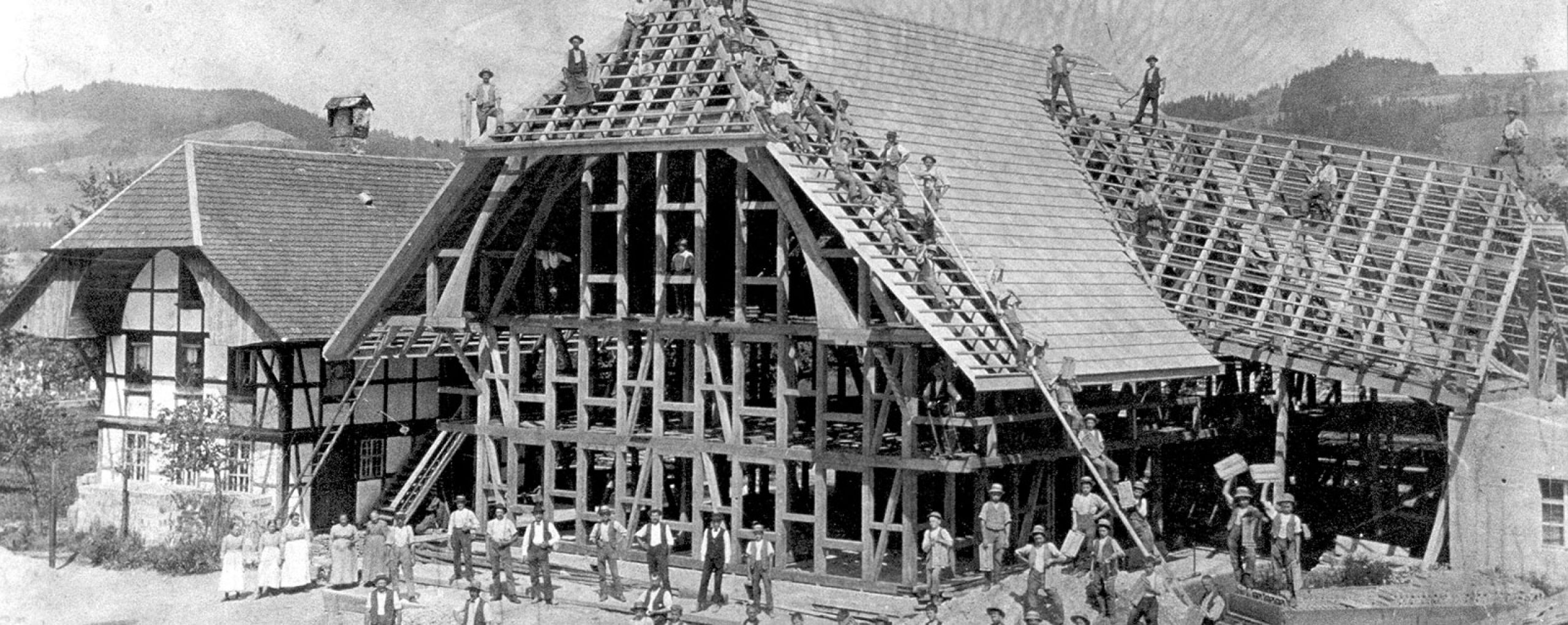
Hans Minder
Local historian and genealogist
Wittenbachgässli 611
3438 Lauperswil
This email address is being protected from spambots. You need JavaScript enabled to view it. -
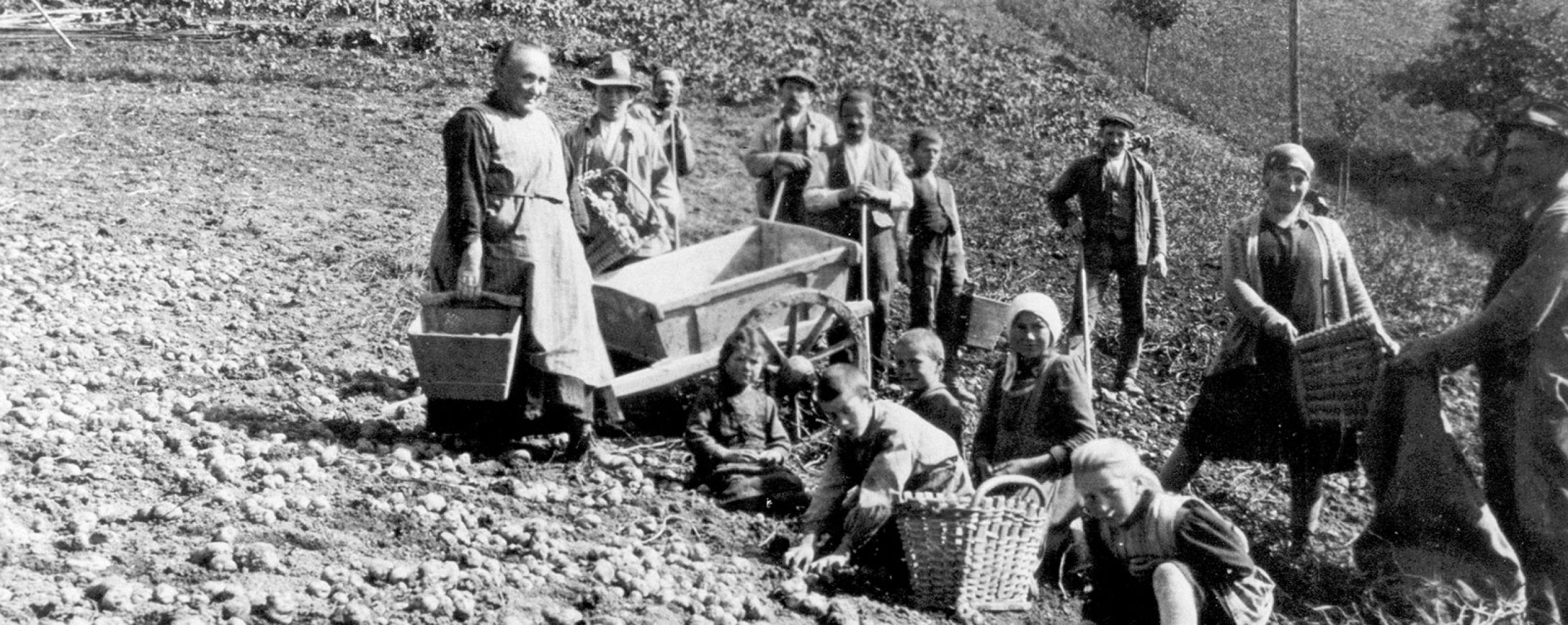
Hans Minder
Local historian and genealogist
Wittenbachgässli 611
3438 Lauperswil
This email address is being protected from spambots. You need JavaScript enabled to view it.
I research about the municipalities, citizens and family names of the Emmental
- Affoltern i.E.
- Arni BE
- Biglen
- Bowil
- Eggiwil
- Grosshöchstetten
- Hasle b.B.
- Heimiswil
- Dürrenroth
- Landiswil
- Langnau i.E.
- Lauperswil
- Lützelflüh
- Oberburg
- Röthenbach i.E.
- Rüderswil
- Rüegsau
- Schangnau
- Signau
- Sumiswald
- Trachselwald
- Trub
- Trubschachen
- Zäziwil
-
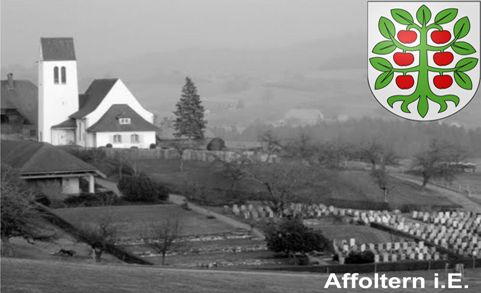
Municipality Affoltern i.E.
First mentioned in 1146, the name comes from the old High German word "by the apple tree". The municipality consists of the villages of Affoltern, Weier im Emmental and Häusermoos. There are many individual farms. In 2013, about 1200 people lived in Affoltern. Well-known is the show dairy for Emmental cheese.
Aebi, Althaus, Bracher, Christen, Grossenbacher, Grütter, Heiniger, Jörg, Joss, Kneubühler, Ledermann, Leibundgut, Lerch, Morgenthaler, Richard/Rychard, Ryser, Schärer, Schmid, Schneider, Sommer, Steffen, Uhlmann, Zuber
-
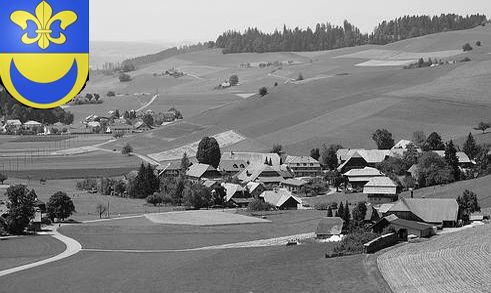
Municipality Arni
The municipality Arni belongs to the parish of Biglen. In 1399 it came to the reign of Signau and with this in 1529 to Bern. Agriculture and forestry are the main sources of income for the community.
Aeschlimann, Bichsel, Blaser, Bürgi, Franz, Gerber, Gottier, Gruber, Hofer, Imhof, Joss, Kiener, Kirchhofer, Küpfer, Leemann/Lehmann, Lenz, Lüthi, Moser, Mosimann, Mutti, Ramseyer, Schneider, Schönholzer, Schüpbach, Schwartz/Schwarz, Siegenthaler, Siegfried, Stettler, Wälti, Wegmüller, Weinmann, Wiedmer, Wyss, Zäch
-
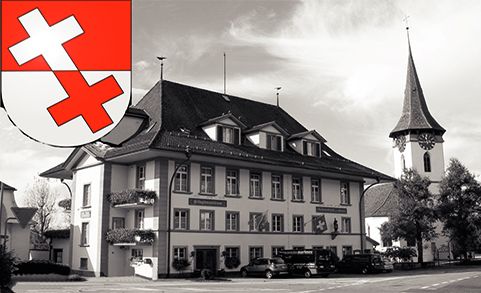
Municipality Biglen
The old parish Biglen includes today's municipalities Biglen, Landiswil and Arni BE. Biglen belonged since 1529 to the bailiwick of Signau, from 1798 to 1803 to the Helvetic district of Gosshöchstetten and from 1803 to 2010 to the district Schlosswil and since 2010 to the administrative district Bern-Mittelland.
Aeschlimann, Baur, Brügger, Bürki, Ellenberger, Flückiger, Gammeter, Gurtner, Hofer, Jegerlehner, Klötzli, Küpfer, Lehmann, Lenz, Moser, Mosimann, Schüpbach, Schwarz, Siegfried, Stalder
-
Municipality Bowil
Christener, Dürig, Engel, Haldemann/Haldimann, Herrmann, Hodel, Huber, Jenni, Joss, Kammermann, Krähenbühl, Künzli, Luginbühl, Meyer, Niederhauser, Pfäffli, Ramseier/Ramseyer, Schäfer, Schwarz, Spitznagel, Stucker/Stuker, Stucki, Thierstein, Tschanz, Wanzenried -
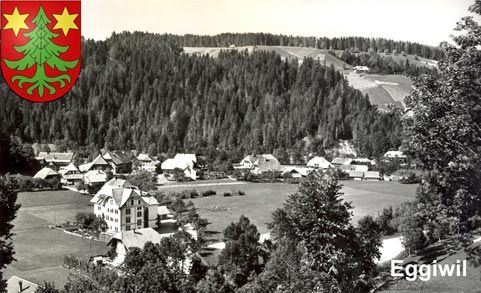
Municipality Eggiwil
Eggiwil became 1648 an independent municipality after the construction of the church (1631). For the construction of the church buses were used, which were pressed off the Anabaptists. Eggiwil is the typical example of a scattered settlement. So, there are eight schoolhouses for less than 3000 inhabitants.
Aegerter, Aeschbacher, Antenen, Antener, Bächler, Badertscher, Bärfuss, Bärtschi, Bichsel, Bigler, Blasimann, Bühlmann, Burgdorfer, Burger, Dubach, Engel, Ermel, Fankhauser, Friedrich, Galli, Gerber, Habegger, Haldemann, Hebeisen, Hertig, Hirschi, Honsberger/Honsperger, Jenni/Jenny, Jost, Kammermann, Kauer, Kneuss, Krähenbühl, Krall, Kupferschmied, Lehmann, Liechti, Lüthi, Mann, Maring, Müller, Neuenschwander, Neukomm, Niederhauser, Otzenberger, Peter, Pfäffli, Rähm, Ramseier/Ramseyer, Reber, Röthlisberger, Rüegsegger, Rüfenacht, Rytz, Salzmann, Schenk, Siegenthaler, Stauffer, Steiner, Stettler, Wermuth, Wiedmer, Willi, Wüthrich, Zahm, Zaugg, Zurflüh
-
Municipality Grosshöchstetten
Augsburger/Augstburger, Benz, Berger, Bühlmann, Dieboldswyler, Geelhaar, Güntlisberger, Herrmann, Kiener, Krähenbühl, Mäusli, Nussbaum, Ramseier/Ramseyer, Rohrer, Roth, Rüfenacht, Schäfer, Schüpbach, Siegfried, Steinmann, Strahm, Stucki -
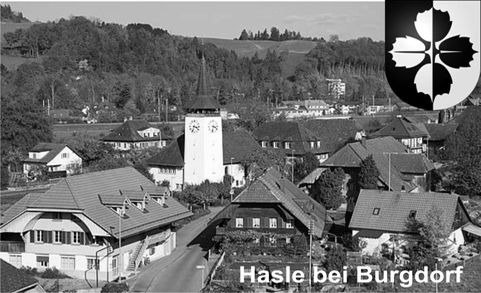
Municipality Hasle at Burgdorf
The municipality Hasle at Burgdorf consists of four parts: Hasle im Emmental, Biembach, Schafhausen and Goldbach. In addition, there are other hamlets. Hasle covers about 22 km2. In 1384, Bern acquired Hasle as part of the Ranflüh court. Later in 1525 it was assigned to the mayor's office Burgdorf and from 1803 to 2010 it belonged to the district of Burgdorf. Since then it is part of the administrative district of Emmental. Particularly noteworthy is the church with the medieval frescoes and the large wooden arch bridge over the river Emme.
Bärtschi, Baumann, Baumgartner, Bernhard, Bichsel, Bietenharder, Blindenbacher, Bolzli, Bracher, Burkhalter, Christen, Geissbühler, Gfeller, Glanzmann, Grossenbacher, Hasler, Hofer, Iseli, Jegerlehner, Joss, Kiener, Kistler, König, Kramer, Liechti, Locher, Löffel, Meerstetter, Möschberger, Mosimann, Müller, Muster, Neuhaus, Ramseier, Ritter, Rüfenacht, Schär, Schilt, Schneider, Schumacher, Schüpbach, Schütz, Schweizer, Steiner, Stettler, Tellenbach, Walther, Wälti, Wegmüller, Widmer
-
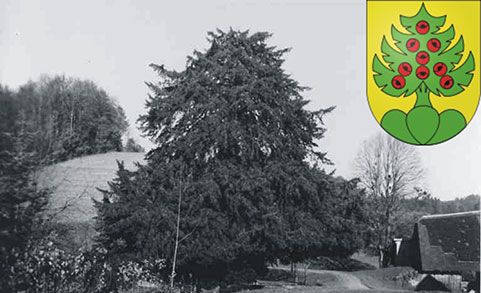
Municipality Heimiswil
Heimiswil belonged in the Middle Ages to the dominion of Kyburgs. In 1402 the village has been overtaken by Burgdorf. Since the Reformation, Heimiswil was supervised from Oberburg church-wise. With many Anabaptists, Heimiswil was separated from Oberburg in 1703 and got its own parish.
On the farm Gärtsler in the Area of Kaltacker, there is a 1000-year-old yew, which is also depicted on the municipal coat of arms.Aebi, Aeschbacher, Aeschlimann, Bichsel, Bracher, Brand, Braun, Burkhalter, Christen, Dietschi, Ellenberger, Fink, Gerber, Gugger, Hausmann, Held, Hulliger, Jau, Jost, Leuenberger, Liechti, Lüdi, Oppliger, Ramseyer, Roth, Rutschi, Ryser, Schafroth, Schertenleib, Schürch, Schütz, Schwander, Uhlmann, Ursenbacher, von Ballmoos, Widmer
-
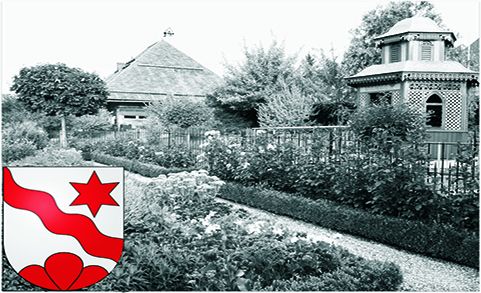
Municipality Dürrenroth
The municipality Dürrenroth belonged to the family of Balm until 1312, when it was involved in the regicide of Königsfelden and was therefore expropriated. Thus, Dürrenroth came to the German Order. With the purchase of the upcoming Sumiswald, Dürrenroth came in 1698 to Bern. After 1803, Dürrenroth came to the district of Trachselwald. During the administrative reform Dürrenroth decided to become part of the Emmental and not of Oberaargau.
Brunner, Christen, Fiechter, Flükiger, Fuhrimann, Heiniger, Hess, Jordi, Kämpfer, Käser, Kauer, Kohler, Konrad, Lanz, Leuenberger, Maibach, Marending, Morgenthaler, Mühlemann, Reist, Ruch, Russer, Ryser, Schär, Schärer, Scheidegger, Schneeberger, Sommer, Sossauer, Stämpfli, Steffen, Wismer
-
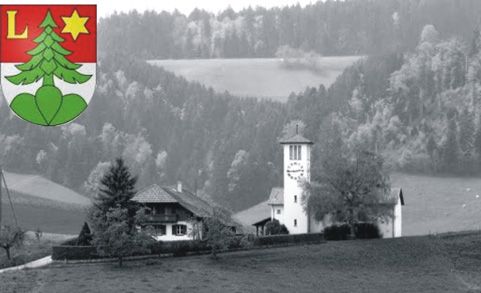
Municipality Landiswil
First mentioned in 1277 as Landoloswile. Since the Middle Ages Landiswil belonged to the court Ranflüh, in 1399 became a part of the bailiwick of Signau. After the collapse of old Bern it belonged from 1803 to the district of Konolfingen. The Tannentalbad and the Löchlibad were well-frequented public baths in the first half of the 20th century. Landiswil belonged to the parish of Biglen and it was not until 1954 that Landiswil got its own church.
Aeschlimann, Arm, Bürgi, Eichenberger, Ellenberger, Falb, Friedli, Fund, Gerber, Kirchhofer, Kohler, Leemann/Lehmann, Liechti, Lüthi, Moser, Rindlisbacher, Schüpbach, Siegfried, Spitznagel, Stauffer, Steinmann, Stettler, Tellenbach, Thomi, Thüler, Wälti, Wyss
-
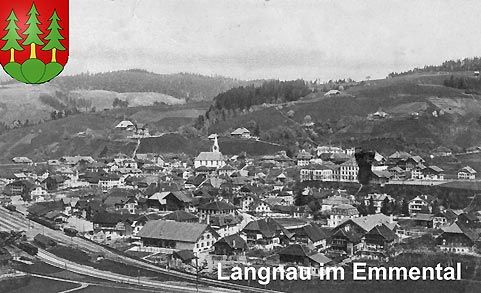
Municipality Langnau
Langnau is located on the lower course of the river Ilfis, about halfway between Bern and Lucerne and is the commercial, trade and service center for the approximately 50 000 inhabitants of the upper Emmental. The municipality covers approximately 24 km² of agricultural land, which is developed by a total of 170 km long road network. Two thirds of the approximately 9000 inhabitants live in the village parts of Langnau and Bärau, one third in the scattered settlement area of the approximately 50 located on the ground of the community side and transverse valleys ("Gräben") of the river Ilfis. The longest are the Oberfrittenbachgraben and the Gohlgraben. The lowest point is 650 m above sea level, the highest point at 1328 m above sea level.
Aegerter, Aeschlimann, Althaus, Arm, Augsburger, Bachmann, Ballenegger, Balz, Bauer, Baumgartner, Berger, Bieri, Blaser, Boss, Brechbühl, Buchschacher, Bürki, Christen, Dällenbach, Fankhauser, Frank, Fuhrer, Gasser, Gehrig, Geissbühler, Gerber, Grimm, Gysler, Habegger, Hagenbuch, Haueter, Hebeisen, Herrmann, Hertel, Hiltbrunner, Hofer, Hofstetter, Hostetmann, Hutmacher, Jakob, Jaussi, Jost/Joost, Kipfer, Klötzli, Kobel, Krähenbühl, Krall, Kühni, Kurz, Langenegger, Lehmann, Luginbühl, Lüthi, Mauerhofer/Maurhofer, Morgenthaler, Mörker, Moser, Müller, Neuenschwander, Ott, Pfister, Probst, Ramseier/Ramseyer, Räss, Rothenbühler, Röthlisberger, Rüegsegger, Rüfenacht, Schenk, Schmid/Schmied, Schöni, Schwander, Schwarz, Schweizer, Siegenthaler, Steck, Steiner, Stettler, Strahm, Studer, Suter/Sutter, Tanner, Vogt, Wiedmer, Wildeisen, Willy, Wingeier/Wingeyer, Wüthrich, Zaugg
-
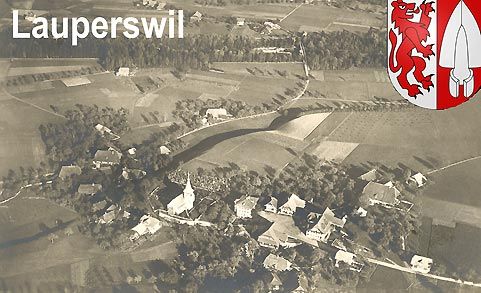
Municipality Lauperswil
Lauperswil is located in the Emmental and covers 2119 ha, including 687 ha of forest.
The municipality Lauperswil consists of the villages of Lauperswil, Emmenmatt, Wittenbach, Längenbach, Moosegg, Obermatt, Mungnau and part of the village of Zollbrück.
Tourism plays a small but not insignificant role, several typical Emmentaler inns offer rooms. One of the most famous excursion restaurants of the Emmental is situated on the Moosegg. The church from 1518 still has the original glass paintings from the construction period. The three bells belong to the oldest in the canton of Bern (around 1250 and 1470).Althaus, Badertscher, Berger, Beutler, Bieri, Blaser, Brand, Brechbühl, Flükiger, Gasser, Geissbühler, Hertig, Hofer, Ingold, Jakob, Jost Joost, Kähr, Kammermann, Kobel, Kohler, Kipfer, Küpfer, Kühni, Ledermann, Lehmann, Leuenberger, Liechti, Lüthi, Maurer, Mosimann, Niederhauser, Nuspliger, Ramseier, Rindisbacher, Röthlisberger, Rothenbühler, Schärer, Schmid, Sommer, Steinmann, Wächter, Wälti, Wildeisen, Zingg, Zürcher
-
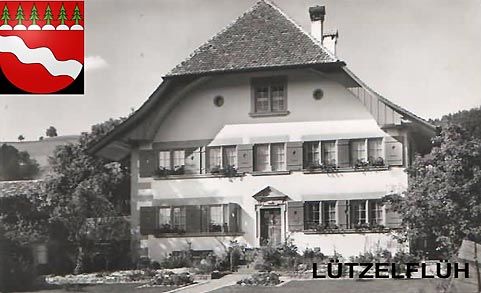
Municipality Lützelflüh
Lützelflüh is situated in the lower Emmental. In addition, the municipality includes part of the place Ranflüh and two exclaves: Lauterbach and Oberried. The municipality has about 4000 inhabitants. The first documents are from the period around 1130 in which the barons of Lützelflüh are mentioned. The village developed from the ancestral seat of the barons. In 1230, the barons of Brandis replaced those of Lützelflüh and built a castle between the villages of Lützelflüh and Rüegsau, which came into possession of the city of Bern in 1607. Brandis became a Bernese bailiwick. On 14th of April 1798 the castle Brandis fell victim to a fire. In Lützelflüh there is a 1505 built late Gothic hall church. On the south side there are graves of Jeremias Gotthelf, Simon Gfeller and Emanuel Friedli.
Aeschbacher, Aeschimann, Bärtschi, Behrens, Bernhard, Bichsel, Blaser, Bracher, Brunner, Bürgi, Burkhalter, Burkhard, Christen, Dannmeier, Dubach, Flückiger, Friedli, Gammeter, Gehrig, Geissbühler, Gfeller, Grossenbacher, Habegger, Haslebacher, Hügli, Iseli, Jörg, Kipfer, Kobel, Kohler, Kühni, Ledermann, Leuenberger, Lüthi, Miescher, Muster, Neuenschwander, Neuhaus, Oberli, Pfister, Probst, Ramseier, Räss, Reber, Reinhard, Rindlisbacher, Rothenbühler, Ruch, Ryser, Saam, Schafroth, Schär, Scheidegger, Schönholzer, Schweizer, Siegenthaler, Sommer, Stalder, Steffen, Steiner, Sterchi, Tanner, Uez, Wälti, Wiedmer, Wymann, Zaugg, Zimmermann, Zürcher
-
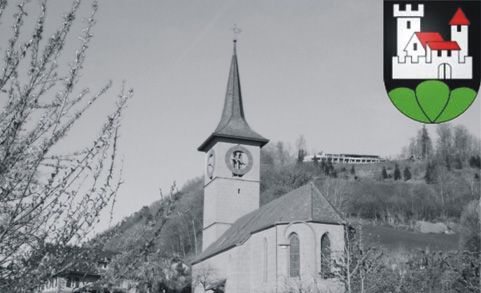
Municipality Oberburg
First mentioned in 1240 as Obrunburc, this means the castle on the Rothöhe (the lower castle is the one of Burgdorf). In 1406 the village came into the possession of Bern. With the industrialization of 1850, the village experienced a modest economic boom. Oberburg is the only municipality in the Emmental that has more inhabitants than citizens. The medieval church still has frescoes dating back to 1517. Nowadays Oberburg suffers from a high volume of transit traffic.
Aebi, Buri, Burkhalter, Franke, Gehrig, Graber, Hofmann, Joss, Liechti, Löffel, Pfister, Reist, Schertenleib, Stalder, Thomi, Walther, Wiedmer, Wynisdorf
-
Municipality Röthenbach i.E.
Aegerter, Bachmann, Blaser, Bolz, Erb, Frey, Frick, Gehrig, Gerber, Gfeller, Glatz, Hertig, Hurst, Jaberg, Järmann, Lüthi, Moser, Müller, Oppliger, Reinhard, Rettenmund, Reusser, Rüegsegger, Rüfenacht, Schafroth, Schär, Schenk, Schindler, Schneider, Stauffer, Strahm, Stucki, Tschanz, Wenger, Zaugg -
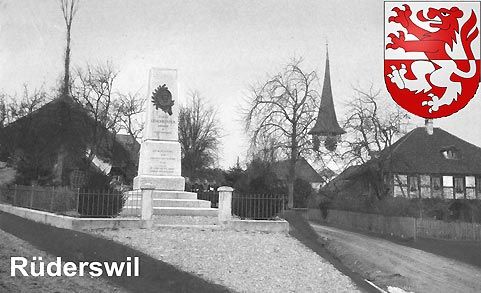
Municipality Rüderswil
Rüderswil is an Alemannic settlement and received its present name in the time of the Franconian reign in the 8th/9th century. The name is referable to the chief of the clan "Ruodheri". The municipality consist of the places Zollbrück, Rüderswil and a portion of the places Ranflüh and Schwanden. At the end of 2006, there were 2’330 people in the community of which 59 were foreigners. Zollbrück in the southeast of the municipality grew together with Lauperswil and is meanwhile bigger than Rüderswil. The fusion efforts with the municipality Lauperswil failed in May 2009 due to the rejection by Lauperswil.
Aebi, Aeschbacher, Aeschlimann, Althaus, Arm, Baumgartner, Bienz, Blasimann, Blatter, Brand, Brechbühl, Burkhalter, Eggimannn, Ellenberger, Engel, Erhard, Gasser, Geissbühler, Gottier, Güntlisberger, Hertig, Hubschmid, Jutzi, Kähr, Kipfer, Kirchhofer, Kobel, Läderach, Ledermann, Leuenberger, Liechti, Lienin, Lüthi, Moser, Mosimann, Neuenschwander, Neuhaus, Niederhauser, Oberli, Ramseier, Schenk, Schmid, Schneider, Stalder, Wälti, Walz, Widmer, Willi, Winkler, Zaugg, Zürcher
-
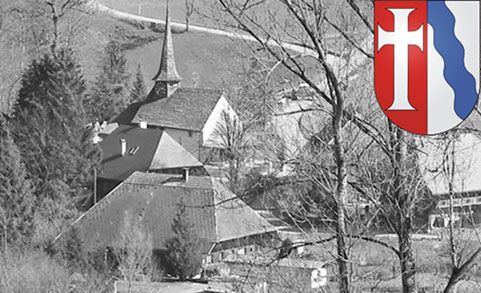
Municipality Rüegsau
The most famous citizen of Rüegsau is Sir Anton Mosimann, a Chef for Queen Elizabeth II.
Aeschlimann, Bannwart, Bärtschi, Bichsel, Bracher, Brand, Burkhalter, Christen, Flückiger, Friedli, Gasser, Gerber, Grütter, Held, Iseli, Jost, Kiener, Kläy, Leibundgut, Lerch, Liechti, Mohni, Mosimann, Pärli, Ramseyer, Reinhard, Reist, Schär, Scheidegger, Stalder, Sterchi, Wegmüller, Wiedmer, Zuber, Zürcher
-
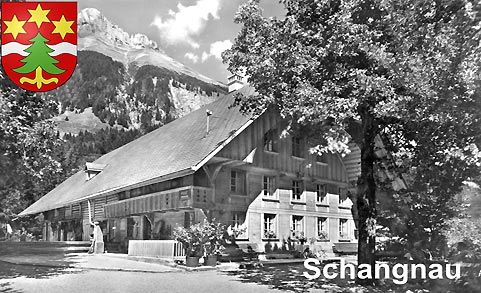
Municipality Schangnau
Schangnau is located in the Emmental north of the mountain Hohgant. Bellow the Hohgant there is a valley with the village of Bumbach. The place Schangnau is situated further down in the valley. In 1878, the first street in Schangnau was built, connecting Schangnau with Eggiwil. Around 1900 another street was built, which leads over the Schallenberg hill.
Augsburger, Bieri, Blaser, Bühlmann, Bürki, Dolder, Egli, Gerber, Glücki, Hirschi, Mann, Marti, Mathys, Räss, Reber, Schilt, Schlüchter, Sempach, Siegenthaler, Wittwer, Wölfli, Wydenkeller, Zimmermann
-
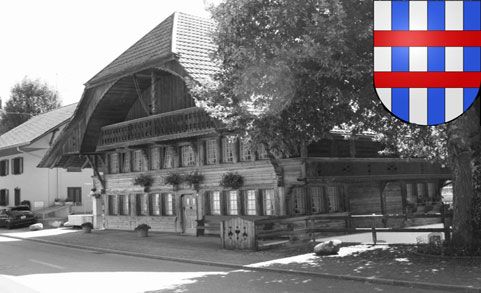
Municipality Signau
The municipality includes the villages of Signau and Schüpbach as well as the villages of Weiler Höhe, Mutten and Häleschwand. The length of the municipality boundary is 27 km and its total area is 22.15 km², with 7.86 km² of forest, 12.45 km² of agricultural land and 1.59 km² of living space. 0.25 km² lie idle. In the Middle Ages the Lords of Signau were important rulers in the Emmental, but overlords of the Habsburg Monarchy. They died on the Habsburg side in Sempach. The two Signauer castles are today on the ground of the municipality Bowil.
Althaus, Bachmann, Baumgarnter, Bieri, Blaser, Dällenbach, Engel, Fischer, Fuhrer/Furrer, Gammeter, Gehrig, Gfeller, Häfliger, Haldimann, Herrmann, Hofer, Jenni, Kästli, Kipfer, Kläy, Krähenbühl, Lehmann, Liechti, Lirgg, Losenegger, Lüthi, Meyer, Moser, Mosimann, Neuenschwander, Niffenegger/Nyffenegger, Oppliger, Pfäffli, Ramseier/Ramseyer, Reinhard/Reinhardt, Richener/Rychener, Rupp, Salzmann, Schallenberger, Schenk, Schlatter, Schneider, Schüpbach, Segessenmann, Siegenthaler, Stauffer, Steck, Steiner, Strahm, Thummermuth, Weber, Wermuth, Wiedmer, Willi
-
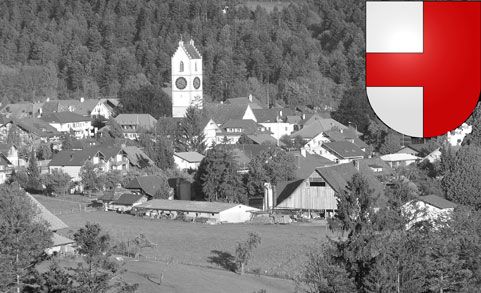
Municipality Sumiswald
Sumiswald includes the two parishes of Sumiswald and Wasen. With an area of 5’933 ha, it is one of the largest municipalities in the canton. The population is about 5’300 (as from 2008). The municipality Sumiswald with their villages of Sumiswald, Grünen and Wasen is located in the upper drainage area of the river Grüne and its inflows Griesbach, Hornbach and Kurzeneibach.
The stained glass windows of the Church of St. Mary of Sumiswald, erected between 1510 and 1512, display the benefactors of the church and the saints. Between Sumiswald and Wasen stands a former religious castle, which is nowadays a care home. There is a legend about the ancient round wooden table in the inn "Bären" which says that after the plague of 1434 all surviving men would have found a place there.Aeschlimann, Alchensberger, Bärtschi, Baumann, Beck, Benkert, Bichsel, Bietenharder, Brand, Burger, Burkhalter, Burkhard, Dubach, Eggimann, Eichelberger, Flückiger, Gammenthaler, Gatti, Geissbühler, Gerber, Gfeller, Graber, Grundbacher, Häfeli, Haslebacher, Häuselmann, Hess, Hiltbrunner, Hirsbrunner, Hügli, Jörg, Kästli, Kilchhofer, Kipfer, Klay, Kohler, Kramer, Kupferschmid, Lerch, Leuenberger, Loosli, Lüthi, Marti, Meister, Moser, Mosimann, Muhmenthaler, Müller, Nyffenegger, Oberli, Oppliger, Pfister, Räss, Rauch, Reinhard, Reist, Ruch, Ryser, Schärer, Scheidegger, Schneider, Schöni, Schürch, Schütz, Senn, Sommer, Spähni, Stalder, Steiner, Steinhäuslin, Trüssel, Uetz/Utz, Widmer, Wisler/Wissler, Wymann, Zürcher
-
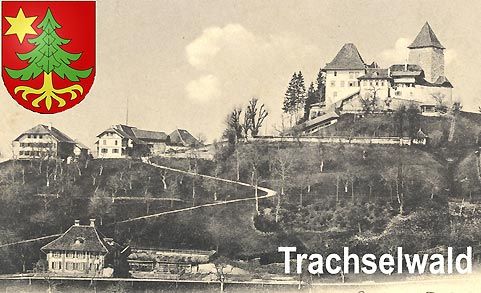
Municipality Trachselwald
The name of the municipality means "Drechsler forest" and is first mentioned in documents in 1131. The village around the castle Trachselwald was first subordinated to the barons of Trachselwald, then those of Rüti at Lyssach and finally to those of Sumiswald until the reign was sold in 1408 to the city of Bern. The castle became a bailiwick.
In 1574 the village was destroyed by fire. To the municipality Trachselwald belongs the valley Heimisbach, which was called until 1967 "Dürrgraben". On 1st. of January 1968 it received its current name Heimisbach, on the 100th birthday aniversary of the dialect poet Simon Gfeller, whose debut work from 1910 was called "Heimisbach".Aeschbacher, Aeschlimann/Aeschimann, Bieri, Blaser, Brand, Brechbühl, Dellenbach, Dubach, Duber, Eggimann, Egold, Frey, Friedli, Gammenthaler, Gauler, Grossenbacher, Harisberger, Haueter, Hengertner, Hofstetter, Joss, Kauer, Kirchhofer/Kirchhofer, Kobel, Krähenbühl, Leuenberger, Liechti, Mumenthaler, Niederhauser, Pfister, Probst, Räss, Ritter, Rothenbühler, Ruch, Schallhas, Schärer, Schneider, Steiner, Voramwald, Wälti, Wiedmer, Zürcher
-
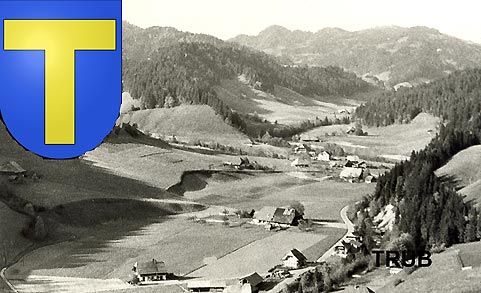
Municipality Trub
Trub is characterized by agriculture and is located in the upper Emmental, in the Napfbergland. It has a very large scattered settlement area. With a surface area of 6’201 hectares, it is one of the largest municipalities in the canton of Bern. About 50% of the municipal area is forested. The highest point is on the Napf at 1408 meters above sea level. The population in 1900 was 2’606. Since then, it has steadily declined. Trub is a classic emigration valley. This is also shown by the number of about 50’000 people who have their place of origin there. After Langnau, Trub is the second largest civic community in the canton of Bern.
Trub is historically significant, especially as it is the location of the monastery Trub, a former Benedictine monastery, which was abolished in the year of the Reformation in 1528.Aeschlimann, Bächler/Bechler, Baumgartner, Beer, Blum, Blunier, Brechbühl, Dreier/Dreyer, Dubach, Egli, Eichenberger, Fankhauser, Gehrig, Gerber, Glanzmann, Gramm, Habegger, Haueter, Hirschi/Hirschy, Jakob, Kirchhofer, Klötzli, Krähenbühl, Kuhn, Kunz, Künzi, Langenegger, Mauerhofer, Meyer, Mosimann, Müller, Muralt, Neuenschwander, Peter, Pfäffli, Ramseier/Ramseyer, Räss, Rentsch, Röthlisberger, Ruf, Salfinger, Scheidegger, Schneider, Siegenthaler, Steffen, Steiner, Sterchi, Tanner, Uhlmann/Ulmann, Wälti, Wittwer, Wüthrich, Zaugg, Zollner, Zürcher, Zurfluh
-
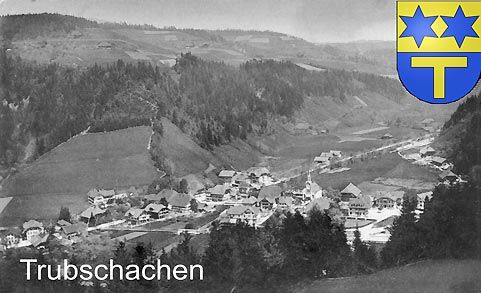
Municipality Trubschachen
Trubschachen is a municipality in the administrative district of Emmental. Until then the village was officially called Lauperswilviertel. Trubschachen is situated at the headwaters of the river Ilfis, at the confluence of Ilfis and Trub, at the altitude of 731 m above the sea level and at the transition from Emmental to Entlebuch. Trubschachen is internationally known for the biscuit factory Kambly and the ropery Jakob. In Trubschachen there is a statue of woman called “The travelers” created by the Chur sculptor Robert Indermaur (* 1947), which is located at the railway station. The supposedly oldest inn “Bären” is in Trubschachen, the “Gasthof zum Bären” is first mentioned in 1356 in a document.
Baumgartner, Beutler, Blaser, Brechbühl, Engimann, Fuhrer, Gerber, Grimm, Krähenbühl, Maring, Müller, Pfister, Rothenbühler, Röthlisberger, Schallenberger, Schär, Schenk, Schwarz, Siegenthaler, Widmer/Wiedmer, Wittwer, Wingeier, Zürcher
-
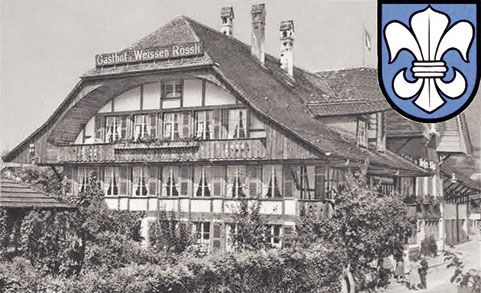
Municipality Zäziwil
Since the Middle Ages Zäziwil belonged to the dominion of Signau and 1399 belonged for the first time to Bern. Bern sold the dominion of Signau to the family of Büren but in 1529 it definitely came back to Bern, which established a bailiwick in Signau. Zäziwil did not receive its own church until 1964. Until 1961 it belonged to Grosshöchstetten, since then it forms together with Mirchel its own parish.
Badertscher, Bosshard/Bosshadt, Christener, Christoff, Ebersold, Fährlimann, Grüssi, Jenni, Krähenbühl, Krieg, Küenzi/Künzi, Künzli, Moser, Schäfer, Schnegg, Schönauer, Schüpbach, Schüttel, Stauffenegger, Struffenegger, Studer, Zaugg


